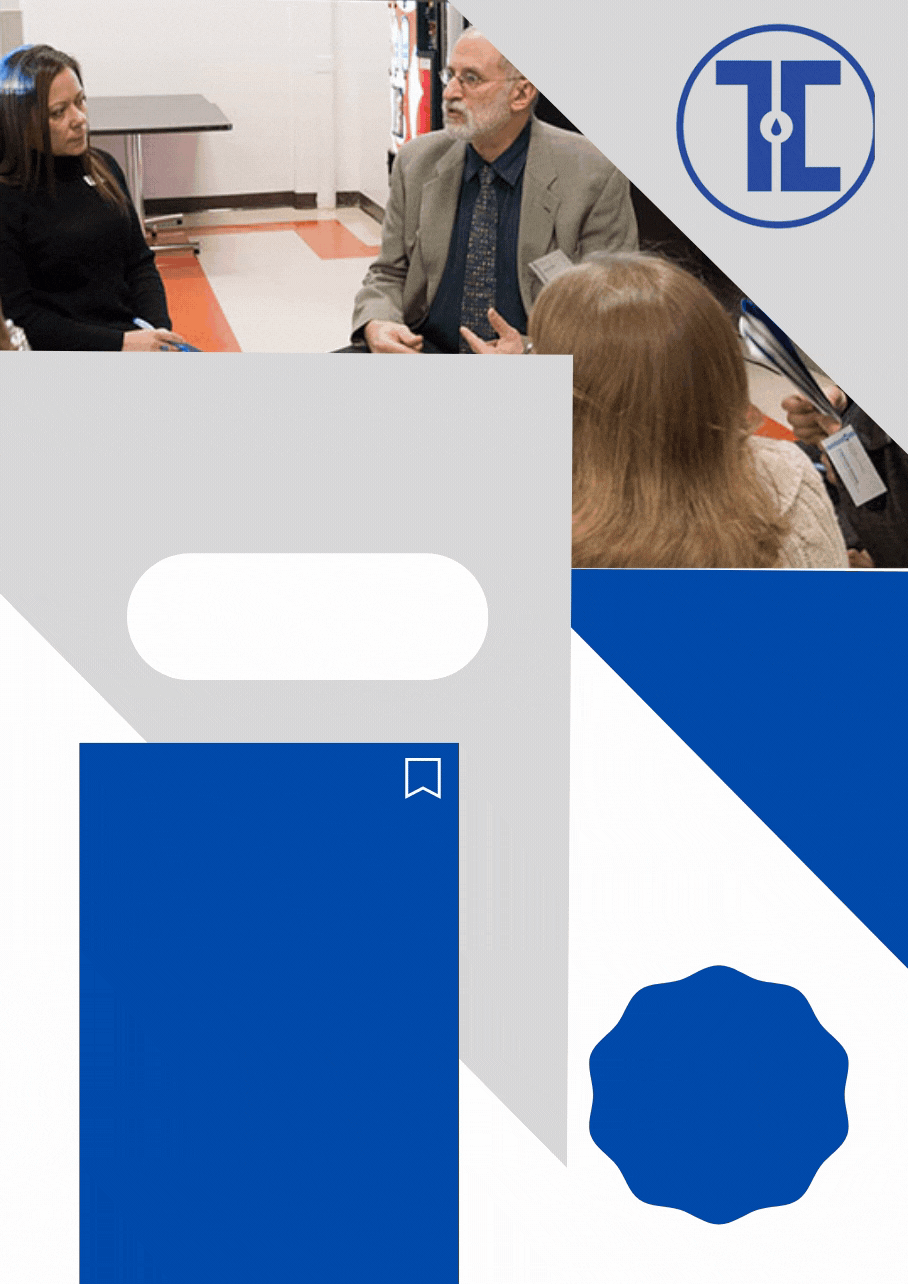
5 Reasons You Need a Great UX/UI Design Portfolio
Plus, what sets Touro University GST graduates’ portfolios apart from the crowd. By Elizabeth Nelson
If you’re embarking on a career as a UX or UI designer, the first step in your journey is getting the best education you can. A master’s degree in Web and Multimedia Design from Touro University Graduate School of Technology certainly offers that, but it’s not all you’ll need in order to land the job of your dreams. To get that coveted offer letter, you’ll also need a great portfolio — one that shows your skills to their best advantage, so prospective employers know exactly what you can do, and why they should hire you instead of one of the many other applicants you are likely up against.
... At Touro University GST, professors are immersed in the field, often holding full-time positions as designers themselves, so they’re very aware of the latest trends, as well as what companies are looking for in new employees. They understand how competitive the fields of UX and UI design are, and their courses are geared toward helping students succeed. Touro professors don’t just want graduates to get hired — they want them to thrive in their new roles. Building a great portfolio helps with both: while the end result secures an interview and (hopefully) a job, the process of creating it helps hone students’ skills and puts their knowledge to the test.
In addition to showing off what job candidates can do, the best UX or UI portfolios are easy to scan, tell a clear story, convey enthusiasm, and are unique. Employers don’t want a portfolio that “looks like it was made in a factory,” as Dominika Juraszek, chair of the Web and Multimedia Design program at Touro GST, puts it. “The design field is constantly changing — there’s no slowing down. We help students sharpen their portfolio skills and create a presentation that’s more customized.”
Why is it so important to have a great portfolio? Here are five reasons:
1. A great portfolio gets your foot in the door.
Without a portfolio, you won’t stand much of a chance of being invited to interview for a full-time job, much less get the job. Your portfolio is as important as your resume or your business card, and maybe even more so: while you might not need a business card in today’s largely virtual world, you can’t apply for a design job without a portfolio.
2. A great portfolio shows who you are.
Your portfolio is your chance to create a full portrait of who you are as a designer. It’s not just an opportunity to demonstrate your skills, it’s a place where you can express your aesthetic sense, your approach to problems, and even your personality. Get creative, and don’t be afraid to be yourself! Employers want to know who you are, as well as what you can do.
3. A great portfolio sets you apart.
The popularity of UX/UI design boot camps means there’s no shortage of people competing for design jobs. Having a degree from Touro GST, however, will automatically put you ahead of the pack. “The students that come out of those boot camps have very similar portfolios, because they’re based on a formula,” says Professor Juraszek. “You come in, you do this, you follow the leader. Here’s a template and they all spit out the same kind of design, word for word.” Touro GST grads have unique and creative portfolios that stand out from the crowd.
4. A great portfolio lands you freelance work.
While you’re pursuing that full-time job offer, it’s nice to have some freelance income, and your portfolio can help you land those gigs that can tide you over until you have a steady paycheck coming in. Of course, not everyone is looking for full-time work, and if you prefer to freelance, even more reason to have a stellar portfolio to advertise yourself to potential clients. Freelance projects have the added bonus of being a great way to polish your skills and get more experience under your belt — and will often yield fresh material for your design portfolio!
5. A great portfolio keeps your skills relevant.
In a rapidly changing and evolving field like UX/UI design, it’s imperative to keep up with the latest trends and technologies. Keeping your portfolio up to date with fresh content not only shows potential employers that you’ve got the skills they need, it helps you stay in touch with what’s happening in your field. Even once you have a job, it’s smart to maintain a current portfolio, so you’ll be ready to take the next step in your career.
Want to learn more? Join an online professional development workshop or online information session about the master’s programs. Click HERE to see our upcoming events and sign up.

Cloudy with a Chance of Leaks: The Advantages and Risks of Cloud Computing
Dimitris Papathomopoulos explains why cloud computing has emerged as the go-to technology — and what IT professionals need to know about it. By Elizabeth Nelson
If you’ve ever sent an email, checked your account balance on a mobile banking app, or downloaded a photo onto your smartphone, then you’ve used cloud computing technology — or “the cloud,” as it’s often called.
But what exactly is cloud computing? Even the most tech-savvy among us might struggle to define the cloud, which has emerged as the leading technology over the past decade. We turned to Dimitris Papathomopoulos , who is a Senior Information Security Engineer at an international fintech company, an Amazon Web Services (AWS) Certified Solutions Architect, Developer, and SysOps Administrator, and a former Touro Graduate School of Technology adjunct professor, for answers....
What is cloud computing used for?
“Cloud computing is a relatively new technology,” explains Papathomopoulos. “Prior to cloud computing, when IT professionals wanted to deploy a database server or some type of software, they had to actually use the physical resources—the machines or hosts.” This took up an enormous amount of resources, both financial and logistical. “They had to spend a considerable amount of money to build server rooms, and then maintain these resources,” says Papathomopoulos. “With cloud computing, all that goes away. You can access all those resources over the Internet, so instead of actually buying physical servers, you access them remotely.”
The major players in cloud computing include Amazon Web Services (AWS), Microsoft Azure, and Google Cloud Platform — and chances are, you’ve used all of them, especially as the COVID-19 pandemic has forced so many people to work remotely. Cloud computing has never been more popular, or more vital.
What are the advantages of cloud computing?
Besides allowing IT professionals to avoid the logistical hassle of finding space to house servers, cloud computing cuts costs by allowing them to buy only what they need and use. “It provides a utility-style service delivery, where you use a server for as long as you need it, and when you stop needing the server, you can terminate it on the spot and stop paying,” says Papathomopoulos. “Or if you need a more advanced server, you can switch to that. You can upgrade to a better service plan with more resources or more power if you need it.”
Cloud computing is also faster, more reliable, and obviously offers more mobility than working with physical servers. It allows businesses to scale more easily, makes collaborating remotely a breeze, and gives easy access to automatic software updates. No wonder it’s become so popular!
What are the risks of cloud computing?
Like any type of technology, cloud computing has its disadvantages, as well. The one most people may think of first is the risk of a data breach, especially since big breaches at major companies like Heartland Payment Systems, Equifax, and Adobe have been in the news.
However, Papathomopoulos sees another challenge with cloud computing. “It entirely changes the way you do things,” he explains. “Security, requirement analysis, development, testing, implementation, continuous improvement—in all these phases of a product life cycle, things change. It's not like before, where there were specialized network engineers, server administrators, and others that were more involved in development, databases, and applications. Now, you need to have a more holistic approach toward the project. You need to ensure you have a shared responsibility model in place. Otherwise, it's not going to work.”
The key, says Papathomopoulos, is making sure there is understanding across the board, and not just with the IT department, when implementing cloud computing technology. “While security is definitely a concern, management also needs to be well aware of what the cloud is and what it entails. It will completely change the landscape of how their technology works, and to me, that’s a much bigger risk. It's very important for management to understand the implications of adapting to cloud technologies.”
Want to learn more? Join an online professional development workshop or online information session about the master’s programs. Click HERE to see our upcoming events and sign up.

What Does a Corporate Trainer Do?
Touro Graduate School of Technology/Instructional Technology alumna Sherisse Brown talks about her role as a corporate trainer in the EdTech world, and shares the five essential skills a corporate trainer should have By Elizabeth Nelson
If you’ve ever sent an email, checked your account balance on a mobile banking app, or downloaded a photo onto your smartphone, then you’ve used cloud computing technology — or “the cloud,” as it’s often called.
As the education and outreach coordinator at a medical library, Sherisse Brown occasionally found herself with the chance to provide instruction to various groups of people. “My job had many different aspects. I was not primarily focused on training, but when I had the opportunity to lead a training, I definitely enjoyed it,” she explained recently. “That’s what motivated me to go back to school —and I chose Touro Graduate School of Technology because they had a program that focused on corporate training.”
...
Touro GST’s Master of Science in Instructional Technology degree prepares graduates to pursue a number of exciting and lucrative careers, including a career as a corporate trainer. But what exactly does a corporate trainer do—and what skills are needed to excel in this role? We talked to Brown, now a corporate trainer and learning specialist at Weill Cornell Medicine, about what it takes to become a corporate trainer, the difference between a corporate trainer and a corporate designer, and why she chose Touro to take her to the next stage of her career.
TechSpec: For someone who is unfamiliar with the job, can you give a brief overview of what a corporate trainer does?
Sherisse Brown:
Simply put, a corporate trainer is responsible for providing specific training to all employees in an organization to increase their productivity, which includes their skills and knowledge. Corporate trainers work with other managers to find where there is a skill gap, and figure out where they can provide training to fill those gaps.
TS: Can you explain what the difference is between a corporate trainer and a corporate designer?
SB: First off, as a corporate trainer you need to have excellent communication and presentation skills. That’s vital. Good time management is another important one. You also need to be proficient in Microsoft Office, especially PowerPoint. And these days, I would add that you need strong video production skills, because with what’s going on in the world, with the pandemic, you have to do more virtual training. I’m doing remote trainings through Zoom, and having strong video editing skills is really important, whether it’s Camtasia or another type of software.
In general, I’d say you need to be able to stay on track with trends and technology, and be able to carry those skills over when you’re actually doing a presentation. Beyond that, it’s important to have a good grasp of adult learning theories and practices—understanding the different ways that adults learn, and some of the principles related to that. You need to be able to provide training that is engaging and motivational, and you need to be able to assess how things went in evaluations after the training.
TS: How did you decide to become a corporate trainer, and how did you discover the Instructional Technology program at Touro GST?
SB: I worked in a library for many years, moving into different roles every four or five years, working in many different departments and learning many different aspects of the business, and I knew I wanted to move more into the corporate field. As a corporate trainer, an advanced degree is definitely preferred, so I decided to invest in going back to school to receive my Master’s degree.
To make a long story short, what drew me to Touro is that they were offering a free class on photography, I attended the class, I enjoyed it, and afterward the Dean of the Graduate School of Technology, Dr. Issac Herskowitz, came in with some other faculty to talk about their programs. I stayed behind and got to hear more about the corporate trainer program, and it seemed like a perfect fit for me. Everyone was so warm and friendly, and answered all my questions—and on top of that, the cost was reasonable. Also, the classes were a hybrid of online and in-person, which appealed to me because I was working full-time and I was concerned about how I was going to take on the responsibility of completing a Master’s degree while continuing to work.
Basically, the faculty provided excellent instruction in every class that I took, and that played a key role in where I am today. The corporate trainer track at Touro gave me so many options, so when I graduated, I could look for jobs not only as a corporate trainer, but as a developer, or an instructional designer—there’s a lot of overlap in those fields, and I felt I could do so many different things with my degree. That's why I definitely recommend the program at Touro GST, because it offers so many possibilities. For me, because of my background working in a University and the skills that I had, everything just kind of fell into place, and I realized my ultimate goal of becoming a corporate trainer.
Now, I’m officially part of the Alumni Mentor Program at Touro, and two or three times a year, I’m a guest speaker at Professor Marty Hersowitz’s class, Effective Oral and Written Communication for Managers.
Find out how Touro Graduate School of Technology can help you realize your career goals.Click here for more information about their corporate design and other programs, now enrolling for the fall semester!
Want to learn more? Join an online professional development workshop or online information session about the master’s programs. Click HERE to see our upcoming events and sign up.



